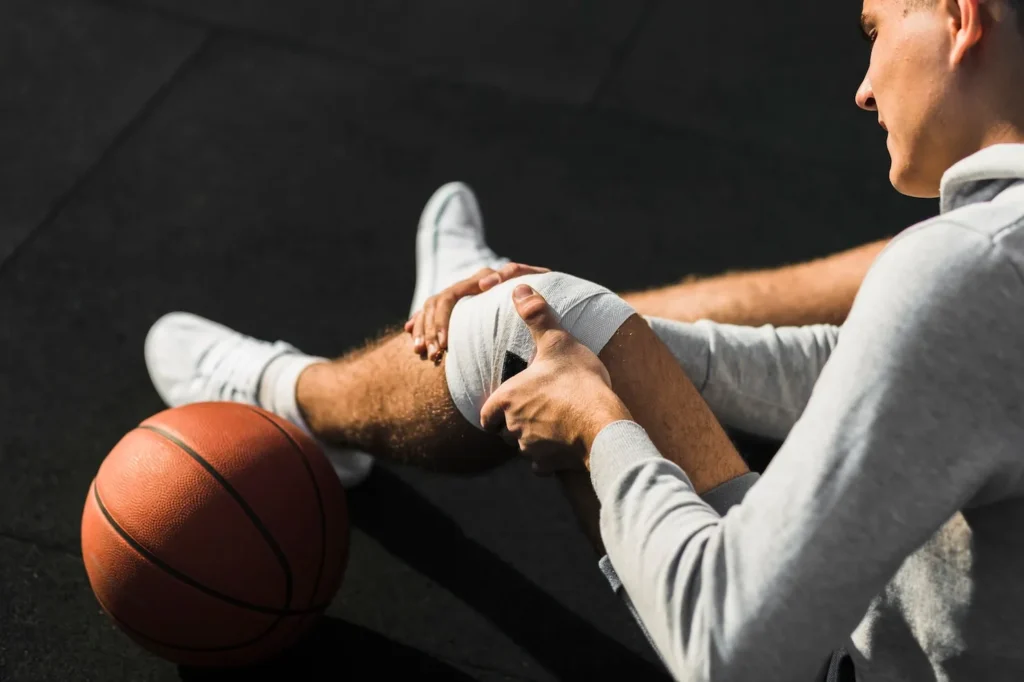Common Sports Injuries: Treatment and Prevention Tips

Sports injuries can affect athletes of all levels, from weekend warriors to professional competitors. Understanding common sports injuries and their appropriate treatment options is essential for recovery and preventing future incidents. Proper diagnosis and early intervention are key factors in minimizing downtime and ensuring a safe return to physical activity.
Sprains, strains, fractures, and overuse injuries represent the majority of sports-related medical issues encountered by active individuals. Each injury type requires specific treatment approaches, ranging from rest and physical therapy to more intensive medical interventions. Athletes should familiarize themselves with injury prevention strategies like proper warm-up techniques, appropriate equipment, and gradual training progression.
For residents experiencing sports injuries, specialized care facilities like Big Apple Medical Care offer comprehensive treatment options tailored to athletes’ unique needs. Their sports medicine specialists provide personalized rehabilitation plans that address both immediate injury concerns and long-term prevention strategies, helping patients return to their activities safely and confidently.
Common Types of Sports Injuries
Athletes face a variety of injuries that can sideline them from participation and enjoyment of their favorite activities. These injuries range from minor strains that heal quickly to severe trauma requiring surgical intervention and lengthy rehabilitation.
Sprains and Strains
Sprains occur when ligaments—the tough bands connecting bones at joints—stretch or tear. Ankle sprains are particularly common in sports involving jumping or rapid direction changes. The classic symptoms include pain, swelling, bruising, and limited joint mobility.
Strains, on the other hand, affect muscles or tendons. Hamstring strains plague runners and soccer players, while lower back strains commonly affect golfers and weightlifters. These injuries typically result from overstretching or overexertion.
The RICE protocol (Rest, Ice, Compression, Elevation) serves as the standard first-aid approach for both conditions. Mild cases typically heal within 2-3 weeks, while severe sprains may require physical therapy or even surgical intervention.
Prevention strategies include proper warm-up routines, strength training, and wearing appropriate footwear for your sport.
Fractures and Dislocations
Bone fractures in sports range from stress fractures (tiny cracks from repetitive force) to complete breaks from acute trauma. Sports with high impact or collision risks like football and hockey see more acute fractures, while runners often develop stress fractures in the foot or shin.
Common fracture sites include:
- Wrist and forearm (from falls)
- Clavicle (from direct impact)
- Metatarsals in the foot
- Fingers
Dislocations occur when bones are forced out of their normal positions in a joint. Shoulder dislocations are particularly common in contact sports and overhead activities like swimming and volleyball.
Treatment depends on severity but typically involves immobilization, possible reduction (realignment), and progressive rehabilitation. Recovery periods vary widely—from 6-8 weeks for simple fractures to months for complex injuries requiring surgical repair.
Knee Injuries
The knee’s complex structure makes it vulnerable to several common sports injuries. ACL (anterior cruciate ligament) tears frequently occur during cutting or pivoting movements in basketball, soccer, and football. These injuries often produce an audible “pop” followed by immediate swelling.
Meniscus tears affect the cartilage that cushions the knee joint. These injuries typically result from twisting forces while the foot is planted. Symptoms include pain, swelling, and catching sensations.
Patellofemoral syndrome—characterized by pain around and behind the kneecap—affects many runners and cyclists. This overuse injury develops gradually from biomechanical issues or training errors.
Treatment approaches vary by injury type and severity. Minor injuries may respond to physical therapy, while ligament tears often require surgical reconstruction followed by 6-12 months of rehabilitation.
Shoulder and Joint Injuries
Rotator cuff injuries plague athletes in overhead sports like baseball, tennis, and swimming. These injuries range from minor inflammation to complete tears of the tendons connecting muscles to the shoulder blade and humerus.
Common shoulder and joint problems include:
- Impingement syndrome
- Labral tears
- Tennis elbow (lateral epicondylitis)
- Golfer’s elbow (medial epicondylitis)
- Bursitis
Shoulder dislocations and subluxations (partial dislocations) typically result from falls or direct trauma. Once a shoulder has dislocated, the risk of recurrence increases significantly.
Joint injuries often respond well to rest, anti-inflammatory treatments, and targeted physical therapy. Prevention strategies include proper technique, gradual training progression, and specific strengthening exercises for the supporting muscles around vulnerable joints.
Treatment and Recovery Strategies
Effective management of sports injuries requires a structured approach that begins with immediate care and extends through complete rehabilitation. Proper treatment not only alleviates pain but also promotes optimal healing and helps prevent future complications.
Immediate Care and RICE Protocol
The RICE protocol remains the gold standard for initial treatment of most sports injuries. This approach includes Rest, Ice, Compression, and Elevation to reduce pain and swelling immediately after injury occurs.
Rest prevents further damage by stopping activity. Athletes should avoid putting weight on the injured area until properly evaluated.
Ice should be applied for 15-20 minutes every 2-3 hours during the first 48 hours. Always wrap ice in a thin towel to prevent skin damage.
Compression using elastic bandages helps minimize swelling. The bandage should be snug but not tight enough to impair circulation.
Elevation keeps the injured area above heart level when possible, which helps reduce blood flow to the injury site and limits swelling.
Medical Attention and Specialist Care
Knowing when to seek professional help is crucial for proper treatment of sports injuries. Some warning signs that require immediate medical attention include:
- Severe pain or swelling
- Inability to bear weight
- Joint instability or obvious deformity
- Numbness or tingling sensations
Sports medicine physicians at facilities like Big Apple Medical Care specialize in diagnosing and treating athletic injuries. They offer comprehensive evaluations including physical examinations and, when necessary, diagnostic imaging such as X-rays or MRIs.
The severity of the injury determines the treatment plan. Options may include medication for pain management, immobilization with braces or casts, or in some cases, surgical intervention.
Rehabilitation and Physical Therapy
Rehabilitation is essential for complete recovery and preventing re-injury. A structured rehabilitation program typically begins once the acute phase of injury has passed.
Physical therapy focuses on:
- Restoring range of motion through targeted stretching exercises
- Rebuilding strength in damaged tissues and surrounding muscles
- Improving balance and coordination to prevent future injuries
- Functional training that mimics sport-specific movements
Recovery timelines vary based on injury severity and location. Minor sprains may require 1-2 weeks, while serious injuries like ACL tears might need 6-12 months of rehabilitation.
Gradual return to sports activity should follow a progressive protocol supervised by healthcare professionals. This typically involves a phased approach with increasing intensity and duration of activity as healing progresses.
Prevention Tips for Reducing Injury Risk
Preventing sports injuries requires a multi-faceted approach focused on proper technique, conditioning, and awareness. The following strategies can significantly reduce your risk of injury while participating in athletic activities.
Injury Prevention Strategies
Consistent use of proper equipment is essential for injury prevention. Always wear sport-appropriate protective gear that fits correctly, including helmets, pads, and supportive footwear. Replace worn equipment promptly to maintain protection.
Listen to your body’s warning signs. Pain is an indicator that something isn’t right—continuing through pain often leads to more serious injuries.
Stay hydrated and maintain proper nutrition to support muscle function and recovery. Dehydration can increase injury risk by affecting coordination and muscle performance.
Regular check-ups with healthcare providers can identify potential issues before they become problematic. Consider consulting with an athletic trainer to develop personalized prevention strategies based on your specific needs and sport.
Allow adequate recovery time between intense training sessions. Overtraining is a common cause of sports injuries that can be easily avoided with proper scheduling.
Warm-Up and Stretching Techniques
Dynamic warm-ups increase blood flow to muscles and prepare the body for activity. Spend 10-15 minutes performing sport-specific movements at gradually increasing intensity before full participation.
Include movements that mimic the actions you’ll perform in your sport. For basketball players, this might include light jogging, lateral movements, and gentle jumping exercises.
Static stretching is most beneficial after exercise when muscles are warm. Hold each stretch for 20-30 seconds without bouncing, focusing on major muscle groups used in your sport.
Incorporate joint mobility exercises to improve range of motion. Small circular movements of ankles, knees, hips, and shoulders can help prepare joints for activity and reduce injury risk.
Cool-down routines are equally important for injury prevention. Gradually decreasing intensity allows heart rate to return to normal and begins the recovery process.
Strength and Flexibility Training
Build balanced strength across all major muscle groups. Muscle imbalances significantly increase injury risk, particularly when stronger muscles overcompensate for weaker ones.
Core strengthening should be a priority regardless of your sport. A strong core stabilizes the body during movement and protects the spine from injury.
Incorporate proprioceptive exercises that improve balance and body awareness. Single-leg stands, stability ball work, and balance boards can enhance coordination and reduce fall risk.
Flexibility training should target sport-specific muscle groups. For runners, focus on hamstrings, calves, and hip flexors; for swimmers, shoulder and upper back flexibility is crucial.
Gradually increase training intensity by no more than 10% per week. This allows your body to adapt to new stresses without becoming overwhelmed.
Safe Return to Sports Participation
Follow a structured rehabilitation program after any injury. Complete rehabilitation reduces the risk of re-injury and ensures you’ve regained necessary strength and mobility.
Return to activity gradually with a phased approach. Begin with low-intensity, controlled movements before progressing to sport-specific drills and eventually full participation.
Use the 10% rule when returning from a break. If you previously ran 10 miles weekly, start with just 1 mile and increase by no more than 10% each week.
Consider using supportive braces or tape during the transition period if recommended by healthcare providers. These can provide additional stability while regaining full function.
Be patient with the recovery process. Rushing back too quickly is a common cause of recurring injuries that can lead to chronic problems.
Frequently Asked Questions
Athletes often have important questions about injury prevention and treatment. The following answers provide practical information for sports participants of all levels.
How can athletes effectively reduce their risk of common sports injuries?
Athletes can reduce injury risk through proper warm-up routines, appropriate equipment, correct technique, gradual training progression, and adequate rest periods between intense workouts.
What are the key strategies for treating sports-related injuries?
The RICE method (Rest, Ice, Compression, Elevation) remains fundamental for immediate care, followed by appropriate rehabilitation exercises and possibly physical therapy at specialized facilities like Big Apple Medical Care.
What are the top methods recommended to prevent injuries in sports?
Consistent strength training, flexibility work, sport-specific conditioning, proper nutrition, hydration, and following a periodized training program are proven methods for injury prevention.
Can you list some common sports injuries and how to manage them?
Sprains require stability and gradual rehabilitation, stress fractures need extended rest, tendinitis benefits from targeted exercises, and muscle strains heal with progressive stretching and strengthening.
What steps should be taken immediately after a sports injury occurs?
Stop activity immediately, apply ice to reduce swelling, compress the area with an elastic bandage, elevate the injured body part, and seek professional medical evaluation promptly.
What are some practical tips for injury prevention in young athletes?
Young athletes should focus on proper technique before intensity, participate in multiple sports rather than specializing too early, maintain appropriate training-to-rest ratios, and use properly fitted protective equipment.






